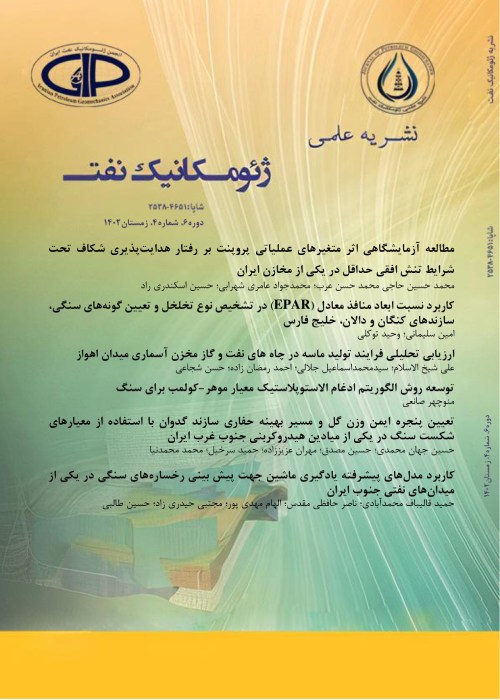Improving drilling speed and cost reduction through risk management and well-trajectory design
Author(s):
Article Type:
Research/Original Article (دارای رتبه معتبر)
Abstract:
Summary In this paper, in order to minimize drilling costs, it is attempted to offer a way to reduce future drilling risks through analyzing past drilling. Risk management steps are implemented for the past drillings in one of the Iranian oil fields. Before risks can be managed, they must be identified, and they must be identified before they become problems adversely affecting the project. The analysis is the conversion of risk data into risk decision-making information. The most common risks are identified and evaluated in severity and probability. Evaluated risks are classified into five categories of tolerable (T), low (L), medium (M), high (H) and intolerable (IN). A risk number is assigned to each of these categories that are prioritized based on their risk number. Finally, a consolidated list of priorities of risks is created. Planning turns risk information into decisions and actions for both the present and future. As a new method for risk aversion planning, a three-dimensional (3D) map of the geology formation in order to specify the best future well path, is designed. This shows the high risk and low risk point in the formations that drilling bit will be passed from. Drilling can be carried out in a way that there are tolerable risks.Drilling speed for the formations has been defined as a rock property (same porosity or permeability) and propagated into formations based on the past drilling data with simple kriging method. This study attempts to through an analyzing past drilling from two aspects of time and cost in one of Iranian oil fields as a case study, and then, by implementing risk managements to offer a way to reduce the risk of future drilling in the oil field. Introduction Drilling sector is one of the most important and most challenging parts of both offshore and onshore oil fields development. A great part of expenses in this development is allocated to the drilling sector. Reduction or minimization of drilling costs is an important step in order to minimize development costs. Drilling costs have become extensively large in difficult reservoirs with complex drillings so that several companies usually will make groups to share the financial risk (Bourgoyne et. al., 1986). The drilling time that is wasted as the losses such as the loss of drilling equipment and fluids, and the loss of drilling process continuity, is considered as non-productive time (NPT) (Aldred et. al., 1999). Drilling risk management can reduce and even remove these risks and their effects.
Keywords:
Language:
Persian
Published:
Journal of Petroleum Geomechanics, Volume:1 Issue: 1, 2017
Pages:
29 to 39
https://magiran.com/p2118086
دانلود و مطالعه متن این مقاله با یکی از روشهای زیر امکان پذیر است:
اشتراک شخصی
با عضویت و پرداخت آنلاین حق اشتراک یکساله به مبلغ 1,390,000ريال میتوانید 70 عنوان مطلب دانلود کنید!
اشتراک سازمانی
به کتابخانه دانشگاه یا محل کار خود پیشنهاد کنید تا اشتراک سازمانی این پایگاه را برای دسترسی نامحدود همه کاربران به متن مطالب تهیه نمایند!
توجه!
- حق عضویت دریافتی صرف حمایت از نشریات عضو و نگهداری، تکمیل و توسعه مگیران میشود.
- پرداخت حق اشتراک و دانلود مقالات اجازه بازنشر آن در سایر رسانههای چاپی و دیجیتال را به کاربر نمیدهد.
In order to view content subscription is required
Personal subscription
Subscribe magiran.com for 70 € euros via PayPal and download 70 articles during a year.
Organization subscription
Please contact us to subscribe your university or library for unlimited access!


